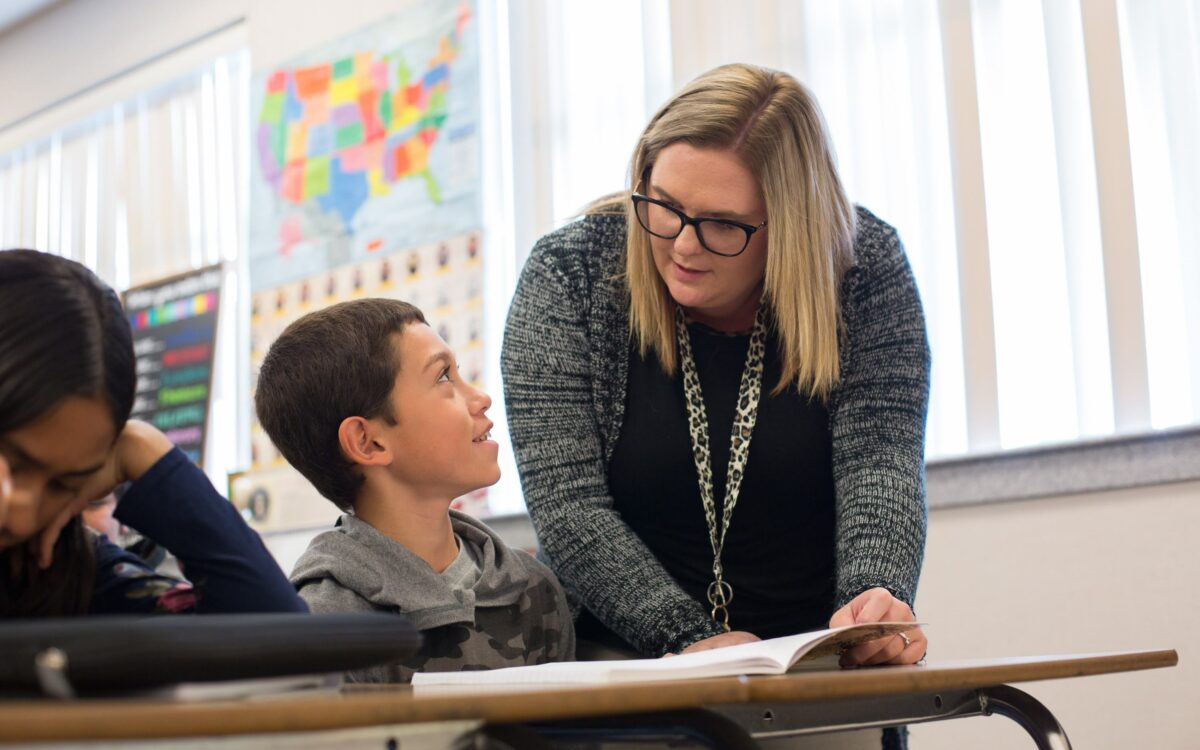Special education in California has been showered with more than $1 billion in new state and federal money in recent weeks, enough to potentially transform a system that’s been underfunded for decades.
“It really is unprecedented and historic,” said Anjanette Pelletier, director of San Mateo County’s Special Education Local Area Plan. “The budget for 2021-22 holds amazing promise for students with disabilities. … It is an amazing time to be thinking about how to use one-time and ongoing resources to support students as we complete extended school-year programs and move into in-person learning in the fall.”
The state budget approved this week includes $656 million in new ongoing funding for special education, including a 4.05% increase to the base funding rate. The state also allotted $550 million in one-time funds for addressing disputes between parents and school districts, which are expected to surge in the next few months as students return to the classroom.
In March, the Biden administration set aside $122 billion for schools as part of the American Rescue Plan to help students, including those with disabilities, catch up after a year of distance learning. Of the total, California received $301 million, more than any other state.
On Thursday, the administration added $3 billion more for special education, with about $450 million earmarked for children ages 0-5 with disabilities. Identifying children with disabilities early and connecting them to services leads to better outcomes over the long term, according to a 2020 report by Policy Analysis for California Education.
GOING DEEPER
Here are some resources on new special education funding:
- 2021-22 California budget bill
- U.S. Department of Education Fact Sheet on the American rescue Plan and Individuals with Disabilities in Education Act
- U.S. Department of Education releases $3 billion to support children with disabilities
- U.S. Department of Education announces American Rescue Plan funds to help schools reopen
- Center for Learner Equity: The Rising Tide That Lifts All Boats: Investing stimulus dollars with an equity focus
As a presidential candidate, Joe Biden promised to fully fund special education. Under the Individuals with Disabilities Education Act, students are entitled to a free public education appropriate to their abilities, but the federal government has never reimbursed states for its full share of the cost of educating students with disabilities. Expenses can include services like one-on-one tutoring, occupational and speech therapy, behavioral therapy and technological devices that help students communicate.
Advocates were thrilled with the funding windfall, but cautioned that much will depend on how the money is spent.
“For this to be a game changer in California, it has to mean that all kids get access to high-quality core instruction,” said Sara Doutre, a special education expert at WestEd, an education research firm. “If it’s just more special ed — more separation, more exclusion — it isn’t going to solve anything.”
Lauren Rhim, executive director of the Center for Learner Equity, which advocates for students in special education, agreed. School districts need to carefully consider how they’re going to spend the money, she said.
“If they spend it on things that didn’t work before, then it’s not going to have much of an impact,” she said.
To get the most out of their funding, schools should focus on placing more students with disabilities in general-education classrooms and training teachers to recognize and help students with undiagnosed learning disabilities as they return to school, she said. Many students, especially younger ones, may have disabilities that were not diagnosed during remote learning. And alternately, some students will be misdiagnosed as having learning disabilities when in reality, they’re just behind.
She also suggested that districts invest in “grow your own” teacher pipelines, recruiting and hiring local residents to become special education teachers. The shortage of special education teachers statewide has worsened during the pandemic, as teachers retired early or left for other professions due to burnout.
If spent well, the money could have a significant impact for students with disabilities and their families, she said.
“It doesn’t quite get us there, but it’s very helpful,” said “Am I surprised? No. The investment reflects the commitment the Biden administration has made to support students with disabilities. I think everyone in the special education community right now is saying, ‘Thank you, thank you, thank you.’”
The state’s investment in special education dispute resolution may also have a big impact. During the pandemic, many students with disabilities fell behind because of the challenges of delivering special services virtually. At the same time, some districts have been slow to assess students who might be eligible for special education or need their learning plans updated, leading to a huge backlog in some districts.
Denise Marshall, chief executive of the Council of Parent Attorneys and Advocates, said the funding boost should ease some tensions between families and school districts in the wake of the pandemic.
“The Covid-19 pandemic has placed a tremendous and unprecedented strain on schools, districts, educators, families and students,” she said. “While many of (our) members report that districts are striving to work collaboratively with families to educate students during this challenging time, we also know too many families are not being offered options that meet the full requirements of federal law.”
